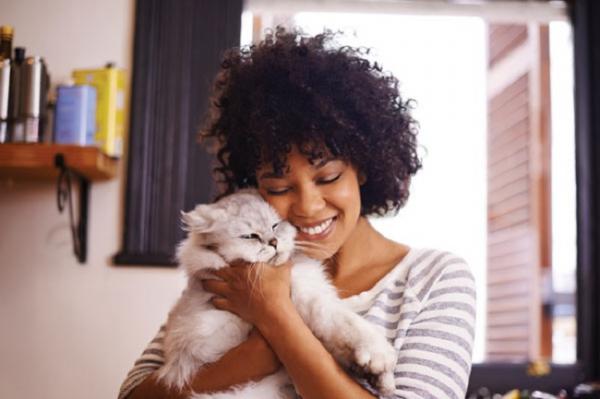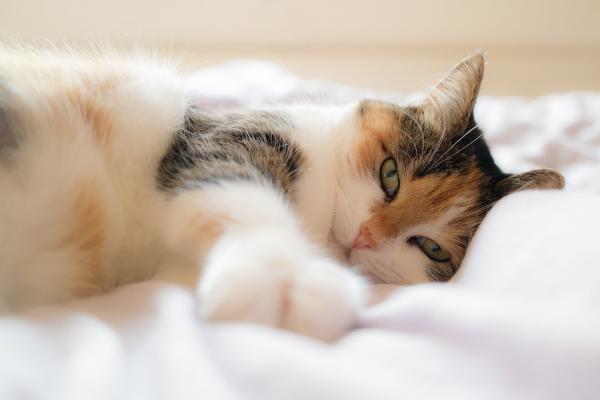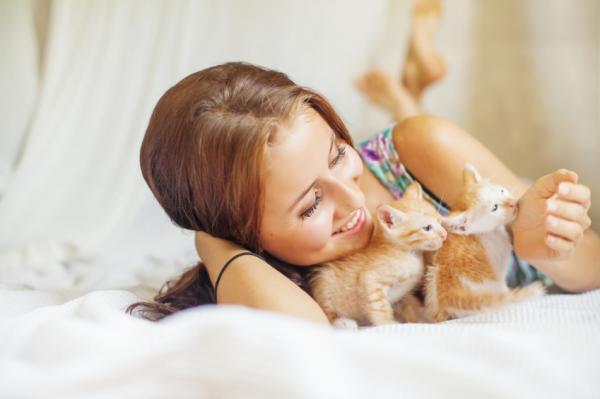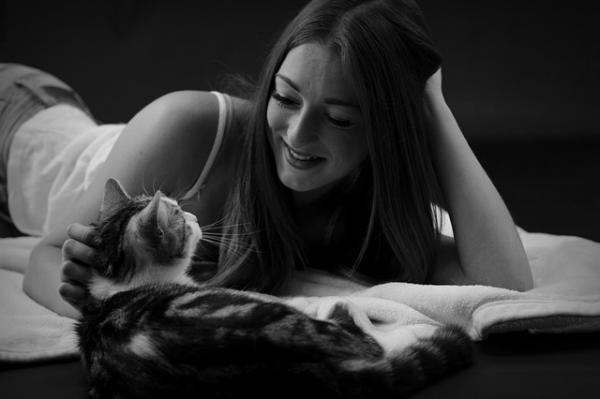Why does my cat purr?

The purring of the cats is something known all over the world, however, the physical mechanism that causes this peculiar sound is still unknown. If your cat purrs a lot, moves the tail or is purring very loudly, here you will decipher part of its meaning.
Not only domestic cats purr, many wild cats like tigers, panthers, lions, leopards, jaguars and cheetahs purr. Also the vast majority of smaller wild cats emit this characteristic sound while kneading, for example.
If you continue reading you can find out the reasons why you have asked yourself at some time: Why does my cat purr? Continue reading and you will be informed about all aspects of your cat’s purr.
Theories about purring
We said earlier that the feline purr is a sound which its origin is still unknown true and the emission mechanism.
There are two scientific theories about it: Electromyographic studies support the hypothesis that they are the muscles of the larynx of the cat, that shaking fast cause a dilatation of the glottis and its immediate regression, whose fast activity causes some vibrations when inhaling and exhaling the air when breathing. All this physical mechanics causes the purr.
The other theory holds that this sound is of hemodynamic origin. This hypothesis states that the purr originates in the posterior vena cava. Specifically at the height of the diaphragm, since the muscles compress the blood flow, causing vibrations that are transmitted through the bronchi.

The maternal purr
During and after delivery the cat communicates with her puppies by purring. Kittens also have the innate ability to purr after a week of life, using it to communicate with your mother.
The purr serves the cat to soothe her puppies during the traumatic trance of childbirth. Then it serves to indicate his position to his litter, since for some days the kittens remain blind. Through the purring and its smell the mother guide your puppies so that they nurse. During breastfeeding the mother calms her kittens to prevent them from biting her nipples when suckling.
When the puppies learn to purr, they communicate their state of mind to their mother. Pleased when they breastfeed, or it can also mean that they are not well, or that they are afraid. The purr is not monotonous, it has different frequencies that the cat uses depending on each situation.
The purr of pleasure
All the people that have enjoyed the cat company in our home, has caused us a pleasant sensation to feel the purr of the cat in our lap, or while we caress him.
The purring of domestic cats is a kind of buzz that produces between 25 and 150 vibrations per second. Among this wide range of tones the cat can express with precision its desires and state of mind. Contrary to popular belief, purring can not necessarily mean only complacency on the part of the cat.

Different meanings of purring
The most common and known is the purr of complacency expressed by the cat in pleasant situations for him. While he eats the cat he purrs; it also does it when caressed, but this is a more complex purr, since it not only indicates that our cat is pleased, but it is also a show of gratitude and confidence feeling loved
However, the cat can also purr when it is sick and asks for our help. Cats also purr for avoid situations of tension, as for example: after being fought, or even to avoid fights with other cats emitting a friendly purr on these occasions.
Types of purring
We have seen that by purring the cat can show various moods. Next we will relate the different tones, frequencies and their meanings to better understand our beloved pet:
- If our cat purrs irregularly it is a sign of maximum complacency.
- If the cat purrs with a vigorous and regular tone it is a sign that he wants something. It can be food, water, or a caress of ours.
- If the cat purrs loudly, it usually means that the animal is in a bad state and asks for our help to alleviate their pain or discomfort.
- When the cat purrs rhythmically and uniformly it means that the cat wants to end up with an uncomfortable situation. For example: when we stare into the eyes, which for felines is an unfriendly sign. In this case the cat purrs in the manner described above to communicate that he does not represent any danger and wishes our friendship. When this happens, our response will be a very slow blinking of our eyes and a caress that will end the tension between the two.
- We must take into account the usual tone of our cat. Since in the same way that people have different shades of voice, each of them has its own tone, more serious or acute, or, more accelerated or paused.

If you want to read more articles similar to Why does my cat purr?, we recommend that you enter in our Curiosities section of the animal world.


